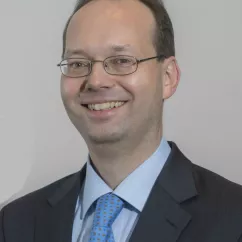Microfinance for Housing: State of Play

Christoph Pausch has been the Executive Secretary of the European Microfinance Platform (e-MFP) since 2007. Based in Luxembourg, e-MFP is the leading network of organizations and individuals active in the financial inclusion sector in developing countries. Prior to joining e-MFP, Christoph worked for more than eight years in the public affairs sector in Brussels.
Gateway: Why is the traditional financial sector reluctant to finance housing in developing countries?
Christoph: It's a multi-faceted problem. Effective housing finance, including microfinance, requires a degree of commitment - staff needs special training on conducting assessments of construction projects and verifying land titles; the institution often needs to develop relationships with local masons and home builders; and the institution needs to understand laws and government programs pertaining to housing and home building.
For microfinance institutions, there is also an additional financing challenge, since a housing portfolio requires managing a longer-term portfolio and longer-term funding, which introduces risks, such as interest rate volatility, that most MFIs aren't used to dealing with. And lenders don't feel much competitive pressure to offer housing loans - many studies have shown that a large portion of clients redirect their microenterprise loans for home improvements. In the absence of strong competitive pressures, many MFIs have found it simpler to continue with the status quo rather than embark on what may to them appear to be a costly endeavor with unknown returns.
There are also obstacles coming from other stakeholders. In many countries, regulations governing microfinance institutions often restrict lending to entrepreneurial activities, in the process excluding housing. Meanwhile, on the funding side, there's a dearth of long-term low-cost funding, especially in local currency, needed to build sustainable housing loan portfolios. Lastly, a number of legal and contextual factors come into play - in many countries, records for land titles exclude poor and rural households, and the problem is especially acute in informal "slum" settlements. Similarly, laws and systems governing use of land as loan collateral - critical for micro-mortgages - are inefficient or inaccessible to all but the richest households.
Yet don't let the obstacles seem daunting - the opportunities for housing finance are definitely there, and there is much that the microfinance sector can do to greatly expand it.
Gateway: What can we learn from recent housing finance initiatives? Who has benefited?
Christoph: The initiatives are many and broad-ranging. The best institutions that have participated in the European Microfinance Award, for example, include a rural cooperative that works very closely with indigenous families in Mexico, providing both savings and loans, as well as enabling them to access a government housing subsidy designed for the poor. Aside from the financial services, the cooperative also encourages clients to collaborate in the construction of each other's homes and has worked with the Mexican government to ensure that the subsidy requirements can be adapted to the realities of their clients.
These programs all have one thing in common - they enable poor families to live in better housing that would otherwise take longer or cost more.
Other projects showcase training programs for local masons, to encourage them to use earthquake-resistant building techniques, employing cost-effective and locally-produced building supplies. The housing microfinance clients are then encouraged to hire masons who have undergone this training. Still others focus on providing micro-mortgages - small mortgages for families at the bottom rungs of the middle class -- enabling them to buy flats in multi-story buildings in large cities, where limited availability of land makes informal building less suitable.
These are just a few highly varied examples, but they all have one thing in common - they enable poor families to live in better housing that would otherwise take longer or cost more.
Gateway: Can housing microfinance reach the kind of scale necessary to help all those who need it?
Christoph: The question of scale is an important one. Thus far, only a handful of institutions have deployed housing finance on a massive scale. However, one Award finalist serves over 180,000 clients with a range of housing finance products, so there is no question that housing finance for poor families can be scaled up. The methodology and know-how already exists. However, this requires commitment on the part of funders, microfinance institutions, and in some countries, changes to government regulations that hold back the market.
Gateway: Shouldn’t this be the role of the banks or the state?
Christoph: There is no doubt that both banks and governments have a role to play. The question is what kind of role? The enormous and still-growing deficit of quality, affordable housing in developing countries is enormous. Decades of experience have shown that almost no government is able to meet the demand at anywhere near the needed scale, and many of these initiatives are often stymied by corruption. But governments have a critical role to play in creating the enabling environment for housing finance that motivates institutions to provide housing finance, while still preventing predatory practices that hurt clients.
As for banks, they have thus far shown great reluctance to branch out beyond the upper-income clientele, and are largely unable to assess the repayment capacity of clients with small or informal incomes, especially for the types of larger and longer-term loans that housing finance requires. This is exactly the expertise of microfinance institutions, and in those countries where they have built effective housing programs, we have seen two trends: microfinance institutions themselves becoming large banks with strong balance sheets and a broad-based funding source based on client deposits; and likewise commercial banks themselves have begun to emulate the MFIs, thus looking for new ways to expand their clientele.


